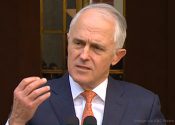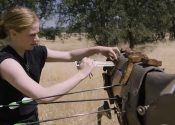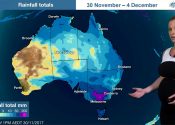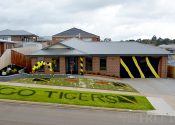
MORE than half of the people killed on Victoria’s roads this year were injured in regional areas, despite only 30 per cent of the state’s population living outside of Melbourne.
First published in the 10 April 2015 edition of the Warragul & Baw Baw Citizen. Statistics have been updated for the online release.
ADVERTISEMENT
According to the state’s Transport Accident Commission, there have been 45 casualties on rural roads this year. The state-wide road toll currently stands at 85 deaths.
The average number of regional road casualties in Victoria by this time of year over the past five years stands at 48 to Melbourne’s 38.
TAC CEO Janet Dore has said the long-standing trend of regional areas being over-represented in the toll continues.
“People in the country are three times more likely to die and 40 per cent more likely to be seriously injured on the roads than those in Metropolitan Melbourne,” she told the Warragul & Baw Baw Citizen.
Ms Dore said the factors which contributed to the imbalance included trip distance and associated fatigue, speed and a tendency to engage in risky behaviour.
ADVERTISEMENT
“The fact country drivers are over-represented in road trauma can largely be attributed to the fact that these drivers generally travel longer distances and at higher speeds [than] city drivers.”
“TAC research also shows that country drivers are more likely to take risks on the roads, particularly in relation to drink driving, speed and distractions.”
Data collated by VicRoads and Victoria Police shows there have been five causalities in the Baw Baw Region alone since the start of last year.
Those accidents were the result of driver error — cars either running off a straight road (3) or a road on a curve (2).
Group manager of the South Coast Division of Ambulance Victoria Eddie Wright regularly attends the scene of road accidents and offers support to loved ones.
“There is a ripple effect that occurs after a major crash, for the families and friends of those involved and the emergency service personnel who were at the scene,” he said.
“It’s a sad reality that in the country our paramedics will come across someone they know.”
Despite Victoria’s vast improvements in road safety over the years, country drivers and driving remain of top concern.
ADVERTISEMENT
“Addressing regional road trauma is a major focus of the TAC,” Ms Dore said.
“The TAC is investing $1 billion over the next 10 years on works that include the sealing of shoulders (emergency stopping lanes), the installation of roadside barriers and safety improvements at intersections.”
“The TAC is also providing funding to enable Victoria Police to conduct targeted enforcement operations over and above normal policing duties in regional areas. These aim to address specific road safety issues at locations and times identified as high risk.”
Ms Dore and Mr Wright have urged local drivers to take the necessary precautions when driving.
“It is important that regional Victorians plan their social outings and if that plan involves drinking, they need to plan a safe way home,” Ms Dore said.
“Similarly, when undertaking longer trips, it is essential that they have had a good night’s sleep and they plan rest stops every two hours.”
“You may feel like you know a particular road like the back of your hand, but you still need to have full concentration and control of your vehicle”, Mr Wright said.
“That text can wait and pulling over for a break could save your life.”
Follow the author on Twitter:
Follow @jack_m_lacy

4 responses to “Counting the toll: regional Vic still site of most road deaths”






















Just because an accident occurs in a regional area does not mean that the occupants COME from a regional area. I am pretty sure I see plenty of cars doing a mass exodus from metropolitan Melbourne to various regional areas the minute there are school holidays or long weekends. Perhaps the statistics should take that into account; ie, persons who are not used to driving on open roads.
For Regional crashes and fatalities could Ms Dore please provide the numbers for drivers who were from metropolitan areas and those who were regional areas?
A lot of rural accidents are caused by a lack of tree trimming and people who drive slow on country roads which cause impatient drivers to pass with a a total lack of visibility with trees hanging over and the very poor state of rural roads
I completely agree with Helen Case, and Alan Bell, this should be realised and it would give more accurate statistics who is causing the accidents.
This would be a much farer of doing things.